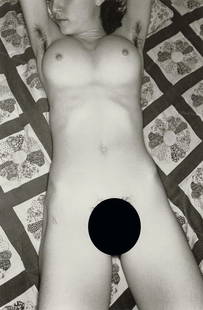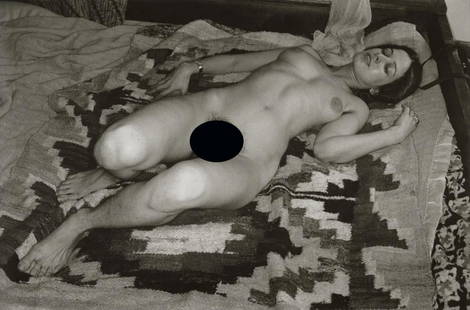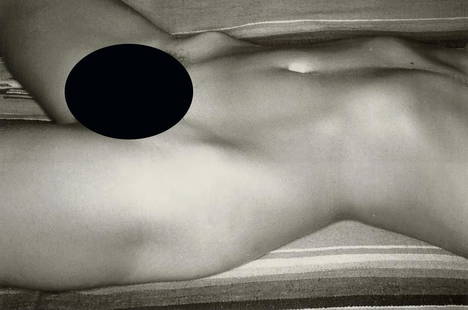
Edgar Degas bronze
Edgar Degas Sale History
View Price Results for Edgar DegasRelated Sculptures & Carvings
More Items from Edgar Degas
View MoreRecommended Art
View More








Item Details
Description
Edgar Degas (French, 1834-1917) "Femme sortant du bain, fragment ," c. 1920-1921, bronze, 16.5"h, signed and lettered "G", A.A. Hebrard foundry Provenance: Andre Pacitti, Paris, 1973 Literature: J. Rewald, Degas Works in Sculpture, A Complete Catalogue, London, 1944, no. LIX, p. 27 (another cast illustrated pp. 124-125). J. Rewald & L. von Matt,L'oeuvre sculpte de Degas, Zurich, 1957, no. LIX, p. 157 (another cast illustrated). F. Russoli & F. Minervino, L'opera Completa di Degas, Milan, 1970, no. S65 (another cast illustrated). J. Rewald, Degas' Complete Sculpture, Catalogue Raisonne, San Francisco, 1990, no. LIX, pp. 156-157 (another cast illustrated). Exh. cat., Degas, Pierre Gianadda Foundation, Martigny, 1993, no. S59, p. 270, (another cast illustrated). S. Campbell, 'Degas, The Sculptures, The Catalogue Raisonne', in Apollo, no. 402, vol. CXLII, August 1995, no. 71, pp. 45-46 (another cast illustrated). J.S. Czestochowski & A. Pingeot, Degas Sculptures, Catalogue Raisonne of the Bronzes, Memphis, 2002, no. 71, p. 261 (another cast illustrated). S. Glover Lindsay, D.S. Barbour & S.G. Sturman, Edgar Degas Sculpture, Washington D.C., 2010, p. 371 (another cast illustrated). Notes: Original wax version executed 1896-1911 (Rewald); cast from 1920-1921 by the A.A. Hebrard foundry in an edition of twenty, numbered A to T, plus two casts reserved for the Degas heirs and the founder. Edgar Degas' Femme sortant du bain, fragment presents the viewer with an agile figure of a woman, apparently climbing out of her bath, a subject that featured in a number of his best-known pictures. This sculpture is entitled 'fragment' because several of the limbs appear to be missing, as was the case in so many of the ancient sculptures that are known to have inspired Degas. This may have been a deliberate decision on the part of the artist: certainly, in another of his sculptures which has a fragmentary appearance, Femme se frottant le dos avec une eponge, torse, there is evidence of where the artist removed limbs, yet during his own lifetime Degas had cast the resulting figure in plaster, revealing his own clear satisfaction with the composition. The fragmentary nature of Femme sortant du bain, fragment may reveal the artist's own desire to echo the artefacts of ancient Rome and Greece. At the same time, it may recall some of the oeuvre of Auguste Rodin, who himself sometimes created works that appeared like fragments and yet were considered sculptures in their own right. Certainly, the timelessness of its format belies the modernity of Degas' treatment of the subject and of the sense of movement that it captures. An intriguing parallel might be the linked figures in Henri Matisse's La danse, the two paintings of that title having been completed in 1909 and 1910, around the time that Degas may still have been adding the final touches to this work. Femme sortant du bain, fragment is one of the few bronzes made from Degas' sculptures of which no remaining original is known. Intriguingly, it is also one of the works with the most articulated surface. This was a characteristic of Degas' more expressive sculptures from the latter part of his career, where his plastic works provided a parallel to his increasingly bold treatments of colour in his pictures. In Femme sortant du bain, fragment, the vigorously-worked surface of the original sculpture has been immortalised in the bronze, allowing us to see the rich contrasts between the smooth areas and those that still feature the troughs and peaks of the artist's workings. As was the case in many of his pictures from this period and earlier, Degas has clearly focussed on the body and its sense of implied, captured movement rather than the character of the person who was his subject. This emphasises the extent to which this was a study of motion and of the human body, rather than any form of portrait. The face has been depicted in such a way as to give a sense of life, rather than of individual personality, drawing the viewer's attention instead to the nimble movement of the figure itself
Condition
Please contact Joe Stanfield at joe@johntoomeygallery or 708.383.5234
Buyer's Premium
- 25%
Edgar Degas bronze
Estimate $250,000 - $350,000
12 bidders are watching this item.
Get approved to bid.
Shipping & Pickup Options
Item located in Oak Park,, IL, usSee Policy for Shipping
Payment

TOP





















![Edgar Degas, Bronze Sculpture of a Dancer Girl: Edgar Degas, Bronze Sculpture of a Dancer Girl. Bronze statue mounted on a black marble base, good patina finish. Inscribed Edgar Degas [after]. Great quality bronze. Size: 18 in. height, base is 5.5](https://p1.liveauctioneers.com/6487/133370/68175294_1_x.jpg?height=310&quality=70&version=1547173472)




























































